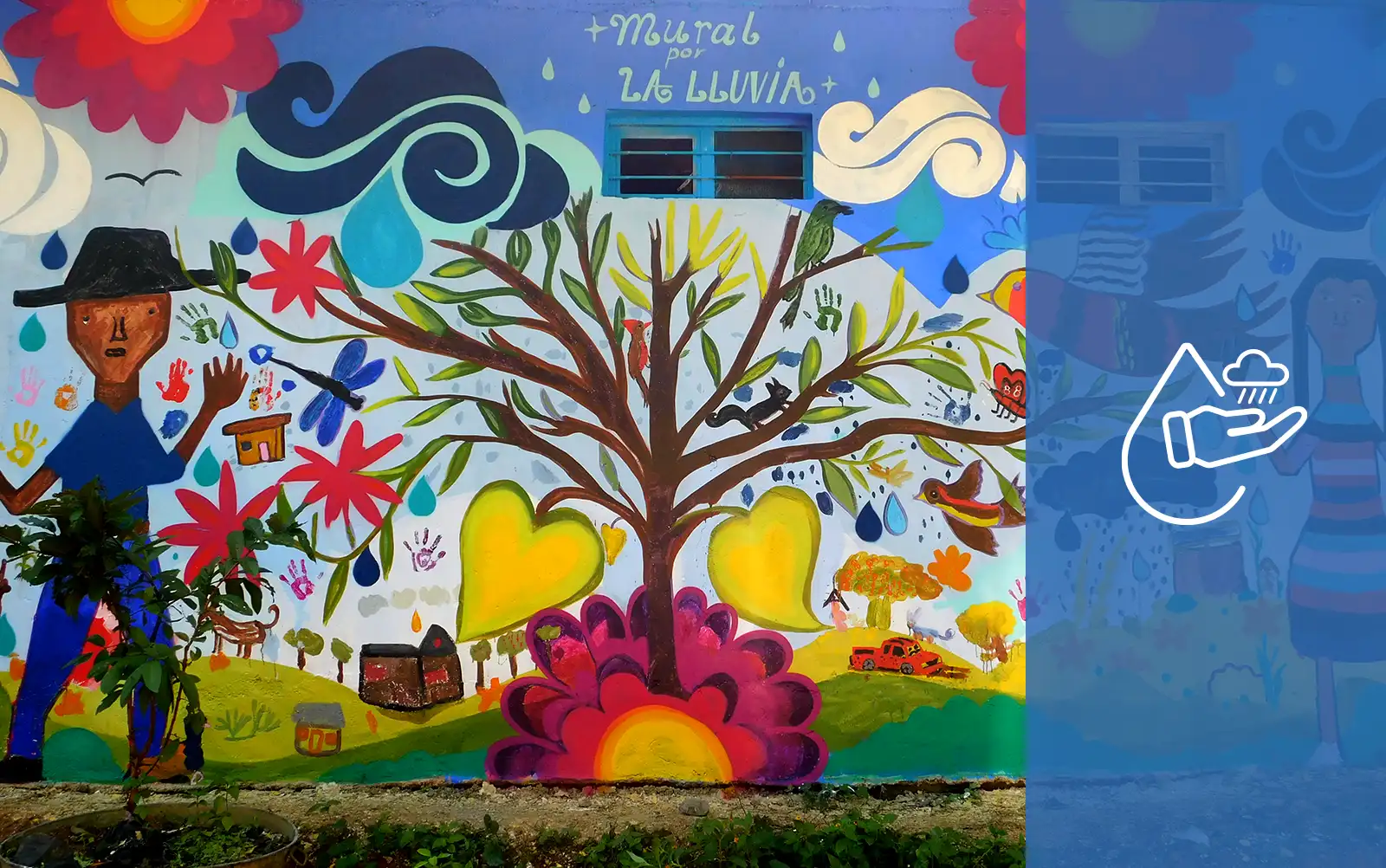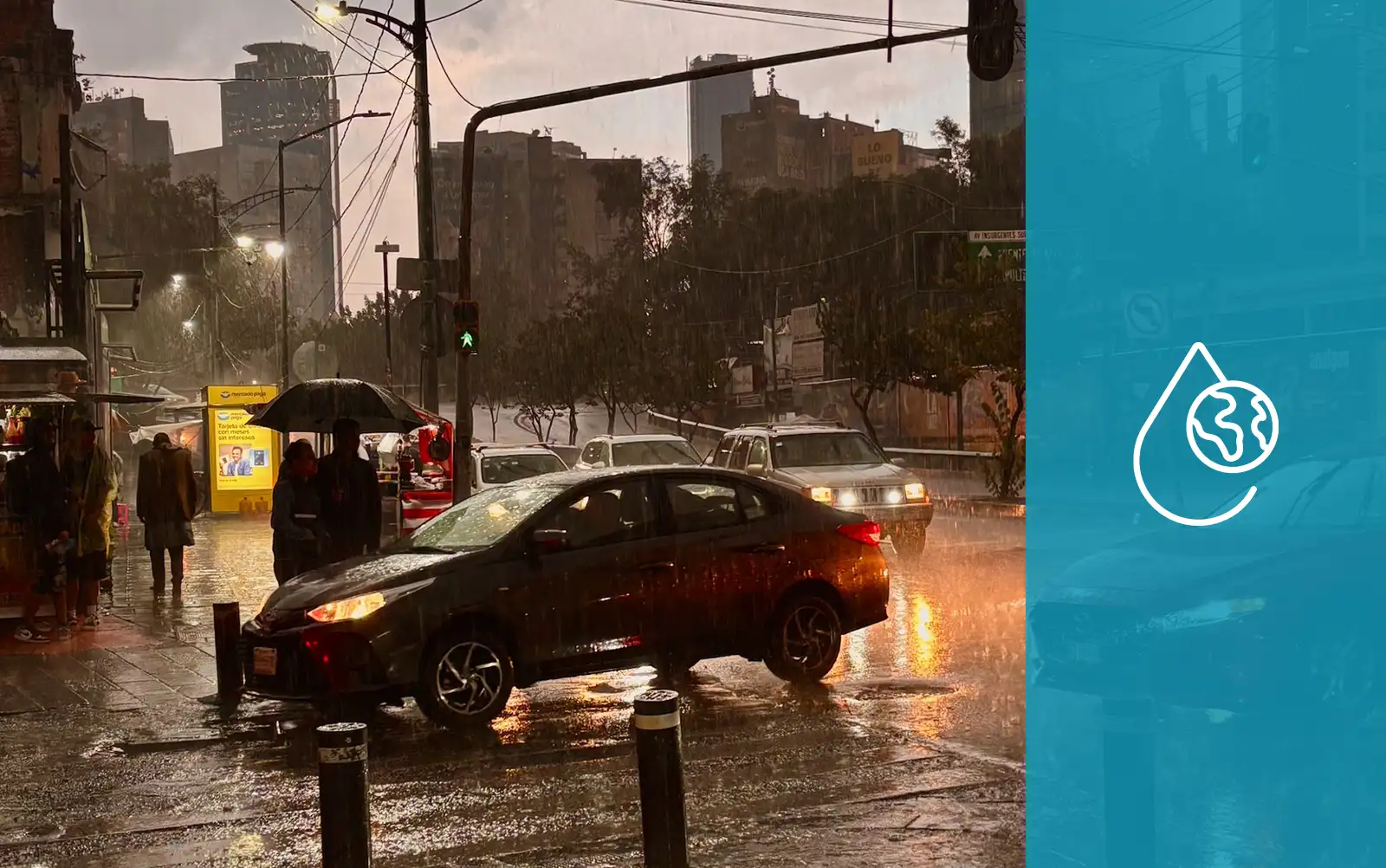
Rainwater Harvesting Supports More Than Just Humans… It Supports Their Four-Legged Shadows Too!
By: Maira Rojas-Tineo
If you walk down the streets of any corner of the world, you will typically find a dog and their human companion, moving together in harmony. In Parque México, Mexico City, a spotted beagle treads alongside their friend. In Central Park, New York City, a goldendoodle leaps into the air while playing fetch. In Freedom Park, Lagos, a determined pug struggles to run to their owner. These scenes are replicated in city after city across the globe.
Some dogs are pampered, while others roam the streets, attempting to survive. For instance, in Mexico City, a metropolis famous for its woven-in dog-walking culture, over 70 percent of residents own pets, and 80% of those own dogs; helping position Mexico as the second highest country in the world for household pet ownership. Despite this deep cultural affinity for animals, the city is also home to an estimated 1.2 million stray dogs. Some of these strays are neighborhood-fed, others were born in the streets, and others are former pets, lost or abandoned. The abundance of stray dogs is not inherently a shortcoming or the culpability of the individual, rather it is a symptom of larger structural failure. It is an example of how socioeconomic inequality erodes human, and, through association, animal, life’s everyday fabric.

“Dogs are humans’ best friends,” Elena, a community member in Quiltepec, commented during an interview. “They take care of us, warn us when something is wrong, and alert us when someone arrives.”



Elena’s words demonstrate the enduring relationship between dogs and humans. Their presence and support, although anecdotal in this case, is foundational to human development. As a consequence, regardless of the setting, dogs, both household and stray, have found a way to mirror their companion’s, or lack thereof, condition. Dogs serve as reflections and indicators of societal health, well-being and equality. These four-legged friends are almost human-adjacent and are part of the daily routines, emotions, and environments around them. The inextricable bond between a dog and their owner is a complex symbol of our world’s successes and frequent failures.
“Dogs look for you. Just like we humans look for them,” Elena continued, “when we have had dogs, we look for them when they’re gone. We miss them. And I think that’s what happens with dogs too. Because when we go out, they run to find us. So the dog is like a friend, another integral member of the family. Compared to other animals, dogs are much more attached to us humans. They always try to be close to you, and communicate their needs.”
Just like Elena said, this interspecies bond is material and visceral, as well as emotional. Dogs, just like humans, are molded by their environmental, and water-related, conditions. At first glance, the words “dog” and “water” might seem disparate. However, upon further examination, these problems are far more intimately connected than anticipated. In a world in which 1 in 3 people do not have access to safe drinking water, dogs are often left experiencing the same conditions as their human-friends. Lack of clean, accessible water does not solely impact human health and security, it impacts every aspect of daily life.
When asked about the importance of water in Quiltepec, Elena did not hesitate to say, “Water is extremely vital. Both for dogs and for humans. Water is something we cannot live without. Water is life; because without water, we simply could not exist. No one could survive; not plants, not animals, not humans. No one. We can live without electricity, without gas, but we simply cannot live without water.”
She paused for a moment before adding with profound insight and understanding:
“Without water, we could not have them. We could not have dogs.”


Rainwater harvesting, therefore, offers not only a sustainable and equitable avenue towards human flourishing, but also a support for the many companions so often consigned to oblivion. Although these systems are, and should continue to be, implemented with community and human necessities in mind, rainwater harvesting’s impacts extend far beyond an anthropocentric lens.
When clean, reliable water becomes available to communities, interpersonal and broader social structures improve. Emotional and physical health stabilizes. Productivity outcomes thrive. And, importantly, animals also gain access to the foundation of life. Moreover, harvested water transitions from not merely a biological tool but also a sustainable and bonding tool for a broader ecosystem. Access to water allows for the integration of shared, all-encompassing dignity; showing the interdependence and interrelational dynamics between humans and their four-legged shadows.



No individual, no community, no ecosystem, can survive in a state of solitude. With this understanding, rainwater harvesting becomes an environmental AND social intervention. It strengthens the belief that no life, whether two-legged or four-legged, genuinely exists in isolation. Every drop of water collected from Isla Urbana’s rainwater harvesting systems has the potential to sustain human life, alongside the broader ecosystems, and socioemotional relationships that are evident in the human-dog bond.


